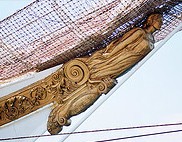
The Sinking of the Spanish Armada
Spain was once a great naval power, with a vast armada of ships, used to defeat enemies, carry out extensive regional and global trade, and sail around the world. Many European kingdoms and nations trembled at the firepower of the legendary Spanish Fleet.
In the late 16th and early 17th centuries, Spain and England were engaged in numerous conflicts, and various political intrigues. Things came to a head when Mary I, the Queen of England and the wife of the King of Spain, died. Her Spanish husband, Philip II was thwarted in his attempt to put a Catholic on the throne, when Elizabeth (a Protestant) took the crown for herself. That set the stage for Spain’s ‘Invisible Fleet’ to set sail for the English coast, in an attempt to launch a full-scale invasion.
The Pope at the time backed the King’s plan. The Vatican looked upon the invasion as a type of crusade that would get rid of the heretic queen, Elizabeth. In 1588, the massive Armada set sail from Lisbon, Portugal, to pick up more troops in the Spanish Netherlands, and begin the English invasion.
The Spanish were beset with problems from the very start. English ‘seas dogs,’ like Sir Francis Drake, who made a living by attacking and plundering Spanish vessels, ruined the plans of the Spaniards. Drake sailed to the Spanish harbor of Cadiz, just before the Armada took off, and destroyed many of the ships that were going to join the main fleet. Another problem stemmed from the fact that the coordination as to where the fleet was to land and pick up more troops from the Spanish Netherlands was shaky at best. Deep-water harbors were hard to find. And yet another bad omen came from the fact that the new leader of the Spanish Armada, Medina Sidonia, had no ocean experience, and was prone to seasickness.
Francis Drake attacked the Armada as it sailed across the English Channel. He had been given plenty of warning that the Spanish were coming. Drake attacked often, but only got his real chance to wreak havoc upon the Spanish when the armada broke formation, while waiting for ground reinforcements along the continental coast. The English took full advantage of this opening and sent in their ‘Hell Burners.’ These ships were, in effect, bombs. The burning vessels were loaded with gunpowder, and sent to drift into the midst of the Spanish Fleet. The fire ships broke the lines of the Armada apart.
Many more battles ensued, and many Spanish ships were lost or wrecked off the coast of Ireland. The once mighty Spanish Armanda limped back to Spain, with only about half of its ships, and many of those severely damaged. This botched invasion went down in the history books, to the frustration of the Spanish, and the delight of the English.
 Follow
Follow


